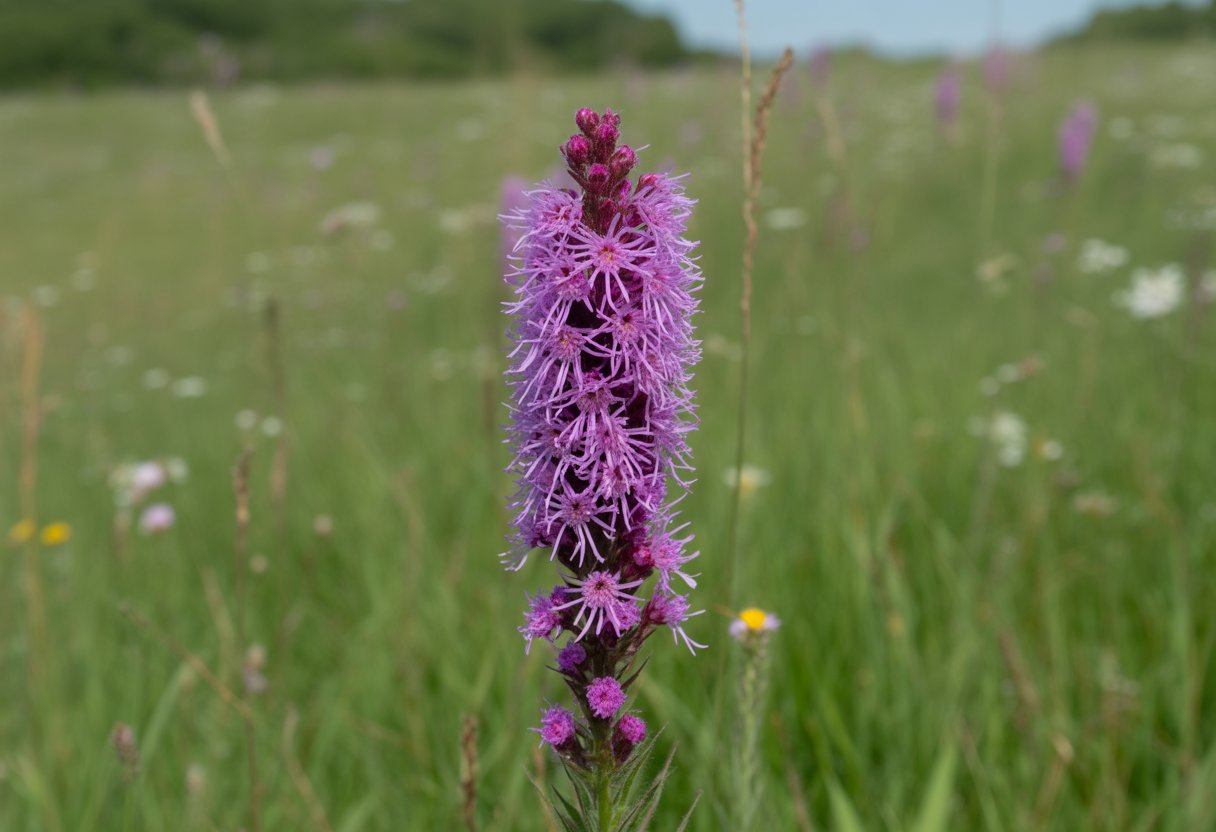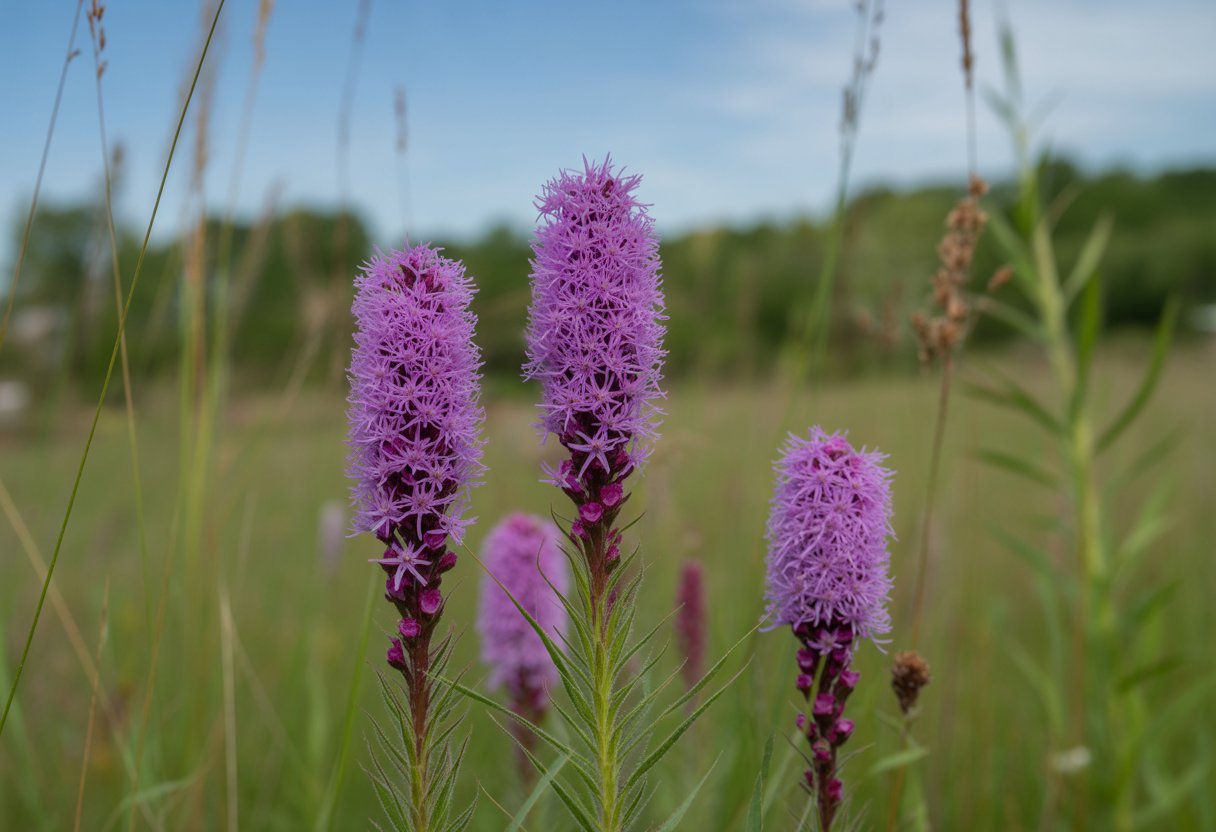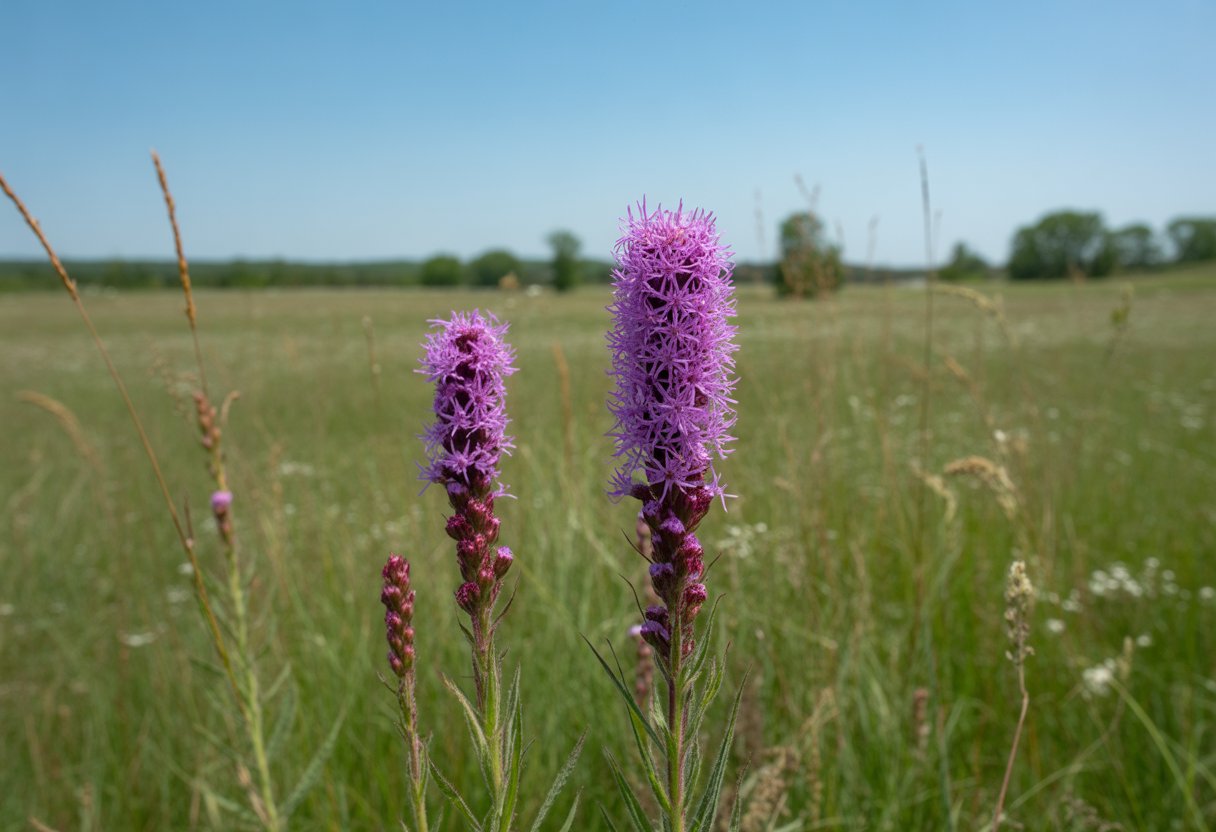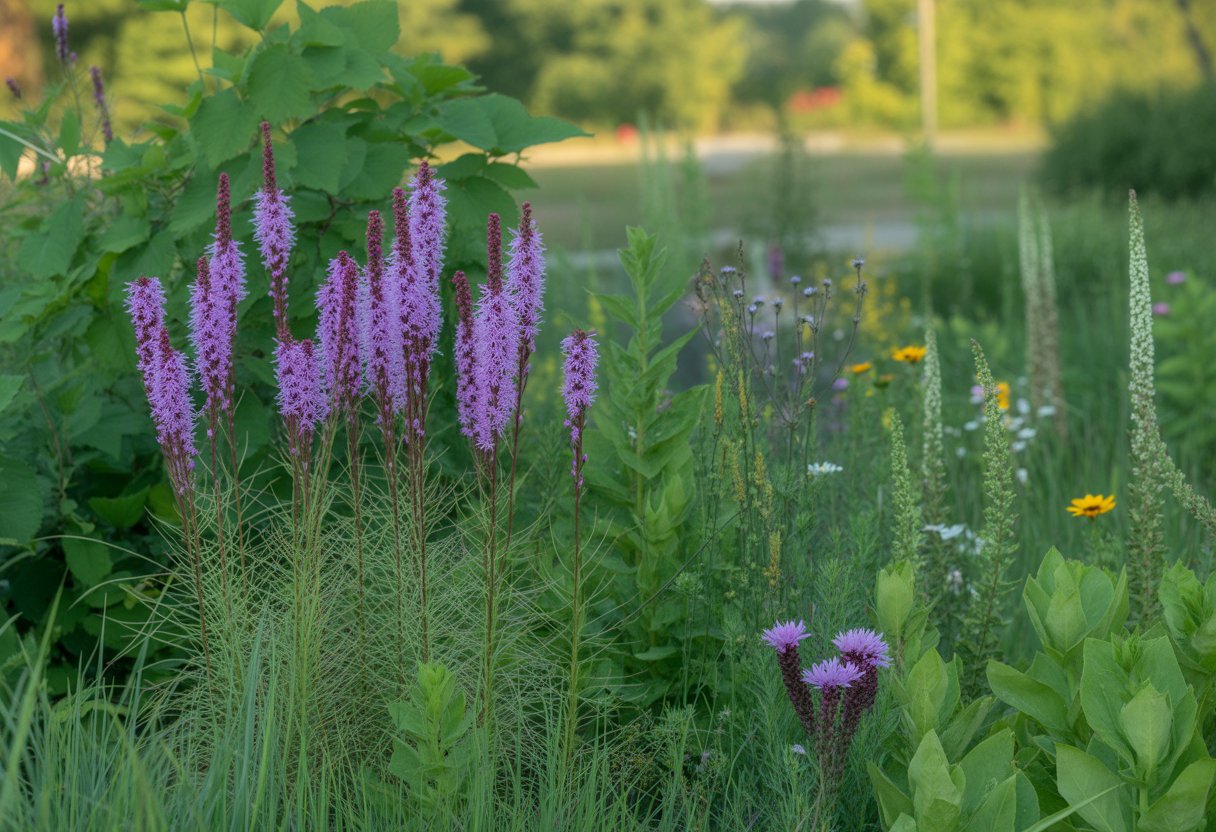Native Blazing Star for Ohio: Identification, Habitat, and Cultivation Guide
The native blazing star for Ohio—often called Liatris spicata or dense blazing star—stands out as a wildflower that fits right in with the state’s climate and soils. It’s famous for those tall purple spikes that show up in late summer, drawing in butterflies and bees all across Ohio’s prairies and meadows.

This plant does best in well-drained soils. Folks use it in native plant gardens and restoration projects throughout Ohio.
Blazing star attracts wildlife and handles local conditions with ease. It’s a solid pick for anyone who cares about ecology or just wants something pretty and tough in their yard.
Native Blazing Star Species in Ohio

Ohio hosts several native Liatris species, each with its own favorite habitat. These perennial wildflowers belong to the Asteraceae family and play key roles in prairies and open woodlands.
They’re easy to spot because of their unique shapes and flowering styles. You’ll see them popping up in both wild settings and intentional landscapes.
Prairie Blazing Star (Liatris spicata)
Prairie Blazing Star, or Spiked Blazing Star, is probably the most familiar one in Ohio. It sends up tall, dense flower spikes that bloom from the top down in late summer.
You’ll usually find it in moist to moderately dry prairies, especially where the soil drains well. This plant can shoot up to 2 to 4 feet tall and brings in butterflies and bees by the dozens.
Its leaves are narrow and grass-like, alternating up a stiff stem. People often choose this one for restoration projects since it grows strong and adapts to a range of sites.
Rough Blazing Star (Liatris aspera)
Liatris aspera, or Rough Blazing Star, likes dry, sandy soils—think glades and open woods. Its leaves and stems feel rough and carry fine hairs, which makes it easy to tell apart from others.
The flower heads are smaller and less packed than Liatris spicata, but they still make a statement with their purple spikes. It usually blooms late summer through early fall and grows about 1.5 to 3 feet tall.
This species helps native pollinators and adds to the diversity of prairies. You won’t see it everywhere, but it’s important for maintaining healthy habitats.
Scaly Blazing Star (Liatris scariosa)
Scaly Blazing Star stands out with its flower heads surrounded by scaly bracts. You’ll spot it in dry, rocky prairies and barrens around Ohio.
Its flower spikes look a bit looser than those of Prairie Blazing Star. Liatris scariosa grows between 1 and 2.5 feet tall and blooms mid to late summer.
Flowers range from purple to pink, pulling in bees and butterflies. It’s got a compact growth style and handles dry, tough spots well.
Cylindrical Blazing Star (Liatris cylindracea)
Cylindrical Blazing Star, or Liatris cylindracea, gets its name from narrow, tightly packed flower spikes. It prefers dry prairies and rocky slopes, especially those with calcareous soils.
This plant usually tops out at 1 to 2 feet, blooming from mid to late summer. Its leaves are narrow and taper sharply, almost like grass.
Pollinators love the flowers, and the plant helps support all sorts of local wildlife.
Ecological Role and Habitat

Native blazing star plays a pretty specific role in Ohio’s ecosystems. It likes prairie habitats and draws in pollinators like butterflies.
When you see it, you know the area’s got a healthy mix of forbs and a reliable bloom schedule.
Prairie Ecosystems and Distribution
You’ll find native blazing star (Liatris spp.) mostly in prairies with well-drained soils and lots of sun. It’s a perennial forb that pops up all over Ohio’s prairies, including places like Adams County.
The plant fits right into these habitats, often taking root on dry to mesic uplands. It blooms late summer into early fall, which fills a gap in the prairie’s flowering calendar.
That timing means blazing star helps keep prairies colorful and balanced even as other plants finish up for the year.
Wildlife Benefits and Pollinator Attraction
Blazing star’s bright blooms are loaded with nectar, making them a late-summer magnet for butterflies—monarchs and swallowtails especially.
Besides pollinators, blazing star gives cover and adds structure to prairies. That helps insects and birds, building up the local food web and boosting biodiversity.
Notable Locations in Ohio
Places like Lynx Prairie in Adams County really show off native blazing star populations. Lynx Prairie stands out as one of Ohio’s best prairie remnants, packed with native forbs like blazing star.
Sites like these highlight why prairie conservation matters. Protecting these areas keeps blazing star—and everything it supports—part of Ohio’s landscape.
Planting, Identification, and Growing Conditions
Blazing star thrives in certain environments and has some unique features that make it easy to spot. Knowing when it grows and blooms helps with both gardening and just enjoying it in the wild.
Sun, Soil, and Moisture Preferences
Blazing star really wants full sun—it’ll bloom more and look healthier that way. It likes well-drained sandy soil so the roots don’t get soggy.
Keep moisture moderate. The plant can handle dry spells but won’t be happy if it’s always wet.
If you’re planting corms, make sure the soil breathes. Heavy clay holds too much water and can rot the roots, so skip those spots.
Good drainage and sunlight together keep the plant strong and less prone to disease.
Morphological Characteristics
Blazing star puts out a straight flower spike that can reach up to 3 feet. The spike sports overlapping bracts with clusters of fuzzy, deep purple flowers.
Leaves are narrow, shaped like lances, and alternate up the stem. Underground, the corm stores energy so the plant can bounce back each year.
The flowers’ fuzziness helps protect them and draws in pollinators.
Growth and Blooming Period
Blazing star starts growing in early spring, coming up from its corms. Flower spikes appear from July through September.
Blooms last for weeks, peaking in late summer. After that, seed pods form and the plant goes dormant.
That dormancy is when seeds spread and the corm recharges for next year.
Native Garden Companions and Conservation

Blazing star really shines when you pair it with other natives that like the same sun and soil. Picking good companions helps your garden thrive and supports local wildlife.
Recommended Native Plant Associates
Blazing star (Liatris spp.) teams up well with milkweeds (Asclepias spp.), which also attract monarchs.
Other favorites: Culver’s root (Veronicastrum virginicum) and solidago nemoralis (gray goldenrod), both bringing structure and offsetting the bloom times.
Native grasses like little bluestem (Schizachyrium scoparium), Indian grass (Sorghastrum nutans), and switchgrass (Panicum virgatum) add height and help keep soil in place.
For early-season interest, allium cernuum (nodding wild onion) and ratibida pinnata (gray-headed coneflower) bring some extra color and variety.
Supporting Wildlife and Ecological Restoration
Blazing star helps pollinators like bees, butterflies, and even hummingbirds by offering nectar late in the season. You’ll often see monarchs—especially those that rely on milkweed—benefit from this boost, both directly and in roundabout ways, since healthy pollinator numbers keep native plant communities thriving.
Adding blazing star to restoration projects alongside prairie dock or spiderwort really shakes things up for biodiversity. These plants ramp up habitat complexity and give insects, birds, and small mammals more options for food and shelter.
Native forbs and grasses together do a lot for soil health and erosion control. They also help build ecosystems that can handle Ohio’s unpredictable climate.


